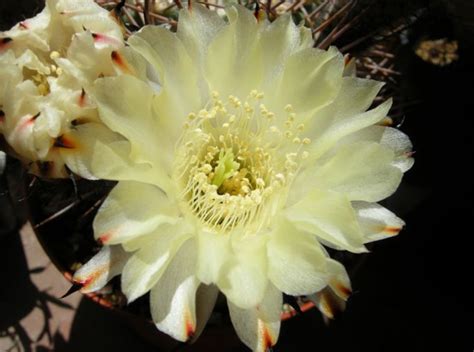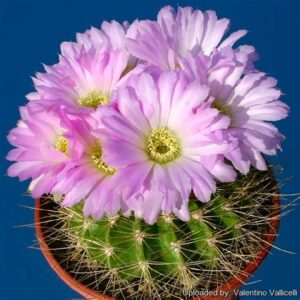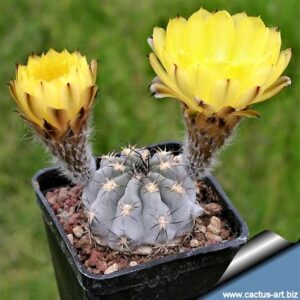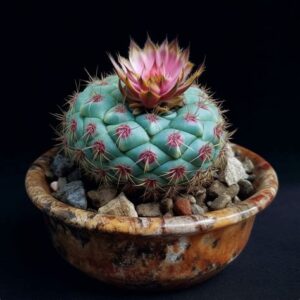In the realm of cacti, Acanthocalycium variiflorum FK 658 stands as an extraordinary specimen that captivates enthusiasts and collectors alike. This particular cultivar is distinguished not only by its striking aesthetics but also by its unique growing characteristics. Understanding this rare find entails delving into its origin, morphology, cultivation needs, and the broader implications for collectors and gardeners.
The Essence of Acanthocalycium variiflorum
Acanthocalycium variiflorum is part of the larger Cactaceae family and is primarily native to the arid landscapes of Argentina. Within its native habitat, it showcases remarkable adaptations to drought conditions, which have informed its classification and appeal among plant aficionados. The FK 658 designation refers to a specific form or collection of this species, making it particularly sought after due to its rarity and distinctiveness in the broader Acanthocalycium genus.
Features and Characteristics: A Closer Look
Morphologically, Acanthocalycium variiflorum exhibits a cylindrical body, which can reach impressive heights of up to 12 inches. Its segments are typically round, resembling a stout pillar crowned with a lush assortment of spines. The spines vary in color and length, contributing to its visual allure. The flowers, often the pièce de résistance, bloom with exuberance, showcasing a palette that ranges from vibrant yellows to deep oranges. These blossoms can emerge in clusters, creating a stunning display that is both beautiful and ephemeral.
Adaptation to Environment and Care Requirements
When cultivating Acanthocalycium variiflorum, one must consider its adaptations to its native habitat. This species thrives in well-draining soil, necessitating a mix that facilitates quick drainage to prevent root rot. A blend of cactus soil, perlite, and coarse sand is ideal. Watering should be approached with caution. During the growing season, applications should be frequency determined by the environmental context, while in the dormant winter months, watering should be significantly reduced.
Light conditions are crucial; Acanthocalycium variiflorum requires bright, indirect sunlight for optimal growth. Too much direct sunlight can lead to scorching, while insufficient light may result in etiolation. Ideally, this cactus should be placed near a south-facing window or under grow lights that mimic its natural exposure conditions.
Pest and Disease Management: Vigilance Required
As with all cacti, Acanthocalycium variiflorum can fall prey to pests such as mealybugs, spider mites, and scale insects. Regular monitoring is essential. Should an infestation arise, neem oil or insecticidal soap serves as an effective remedy. Furthermore, ensuring proper air circulation around the plant can mitigate the risk of fungal diseases, which can occur if moisture levels are improperly managed.
Propagating Acanthocalycium variiflorum
Propagation of this cactus can be an exhilarating venture, rather than solely relying on seeds, stem cuttings offer a more expedient method. When selecting a cutting, choose a healthy segment that is at least a few inches long. The cutting should be parched for several days before planting in the designated soil mixture, allowing the cut end to callous. A subsequent period of minimal watering encourages root development and acclimatization.
Cultural Significance and Collector Enthusiasm
Acanthocalycium variiflorum FK 658 holds a revered position among collectors. The rarity of this variant forms a compelling narrative of dedication and passion, essential for fostering deeper connections with the plant kingdom. Collectors not only seek aesthetic pleasure but often engage in exchanges of knowledge regarding cultivation techniques, propagation methods, and the aesthetics of diverse cultivars.
The proliferation of interest in rare cactus varieties has stimulated a burgeoning community centered around the procurement and study of such specimens. This has led to the establishment of specialized forums, expos, and local clubs where enthusiasts congregate, share resources, and promote responsible collection practices. Within these circles, Acanthocalycium variiflorum FK 658 serves as a hallmark of both rarity and resilience, representing a convergence of natural beauty and human fascination.
Horticultural Practices: Taking It to the Next Level
For the ardent gardener eager to elevate their understanding of Acanthocalycium variiflorum, delving into its ecological role enhances appreciation. The ability of this cactus to flourish in arid conditions signifies its role as a keystone species, providing habitat and sustenance for various organisms within its ecosystem. Moreover, leveraging companion planting—combining it with other cacti or succulents—can create a microhabitat that not only supports the health of Acanthocalycium variiflorum but also adds an intriguing visual aesthetic to the arrangement.
Incorporating Acanthocalycium variiflorum in gardens or collections allows for a dialogue about biodiversity and conservation. The heightened demand for unique and rare varieties often poses threats to their natural habitats. Responsible stewardship, including sourcing from reputable nurseries committed to conservation, ensures the sustainability of these species for future generations.
Concluding Thoughts: The Rare Appeal of FK 658
Acanthocalycium variiflorum FK 658 exemplifies the rich tapestry of life within the cactus family, drawing admirers for its striking beauty and unique adaptations. As custodians of these remarkable plants, collectors should prioritize ethical cultivation and conservation efforts to ensure their rarity doesn’t lead to extinction. Through continued study, propagation, and responsible collecting practices, enthusiasts can adequately honor this rare find, securing its legacy within the botanical world. Whether as a centerpiece in a collection or an intriguing element in an arrangement, Acanthocalycium variiflorum FK 658 invites both admiration and respect, solidifying its place within the annals of horticultural fascination.





Leave a Comment